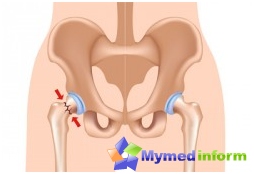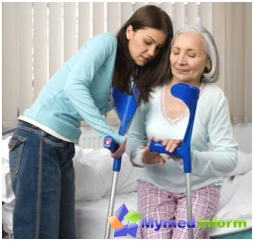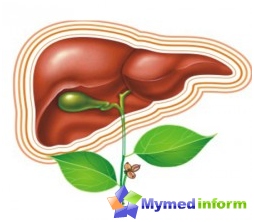Classification of hip neck fractures

Our site found out that the prognosis of the success of the treatment of such injuries depends largely on which the bone is damaged in. It is believed that the closer the fracture to the joint head, the higher the likelihood of the development of necrosis.
Fractures of the neck of the thigh at the location are divided into three types:
- basiscerevicals are those that are located in the zone of transition of the neck into the body of the bone;
- Cervical fractures are directly on the neck;
- Subcitalized undergoing a joint head and are considered to be the most complex cases in treatment.
The bone in the process of fracture can be divided both in the horizontal and vertical direction. The vertical position of the line is considered less favorable because the displacements and development of complications is fraught. Depending on the bones shift, these types of fractures distinguish:
- Valgusny - When the joint head moves up and goes to the side, increasing the angle between the neck and body of the bone;
- Vius - the inverse situation in which the head goes down, reducing this angle;
- Frozen - a fracture in which one fragment is included in another.
Symptoms of the disease

In the absence of treatment, such injuries can lead to severe consequences, among which the following can be distinguished:
- Aseptic necrosis is the samples of the joint head and its subsequent decomposition. Appears as a result of blood circulation violation in a damaged place.
- In the nonsense of bone fragments between them, a false joint can be formed, the removal of which is possible only surgically.
- Veins thrombosis - another dangerous complication caused by the restriction of motor activity. Thrombosis in the most severe cases can lead to death, so the patient is needed good care.
- Pneumonia May develop against the background of wet sputum in bronchops and lungs. Prevention of the development of pneumonia are special breathing exercises.
- Postoperative complications arise in the case of improper installation of screws, loosening metal prostheses, rejection of foreign materials by the body and T.NS.
- Failure to follow hygienic standards in the process of conducting the operation can lead to the development of infections.
- The effects of the fracture include psychological problems: despondency, depression.
- Long bed regime in the absence of proper care is fraught with development Proleegoes.
- Among complications you can allocate degenerative destruction of the joint.
- The fracture of the hip neck is often accompanied by a general decrease in immunity, against which many diseases may develop.
- Elderly with such injury often chronic diseases are often exacerbated.
Treatment of hip neck

Injuries of this type are considered one of the most difficult. Even under the condition of competent treatment and good patient's health status, the full battle of bones occurs no earlier than six months after injury. The most effective method of therapy is the surgical intervention, which can be divided into two types:
- Osteosynthesis implies comparison of parts of the bone and their subsequent fixation using special devices: plates, screws, etc. NS.
- Endoprosthetics - this is a complete replacement of a bone fragment with an artificial prosthesis. This method is most often applied to the elderly patients older than 70 years old. With endoprosthetics, the recovery period is significantly reduced, the risks of the development of complications decrease. Already after 3 weeks, the damaged joint may be subjected to minor loads.
There are cases when it is impossible to resort to surgical intervention. Various factors are considered to be contraindications, such as patient age, fracture, health status, drug intolerance or other risks associated with the operation. In such cases, conservative treatment is appointed. It consists in extracting the limb, its complete immobilization, blending gypsum bandage. This method is less effective than the operation, does not always allow to fully restore the motor activity of the person. In relation to older patients, conservative treatment is trying to apply as much as possible.
Rehabilitation period
An important role in the recovery of the patient plays the rehabilitation period. It includes a set of events aimed at the speedy splicing of bone fragments, minimizing the risks of the development of complications, the resumption of human ability to walk. For successful rehabilitation, patient needs such procedures:

- Massage of various muscle groups. It allows you to improve blood circulation, prevent the development of laying out, avoid the risk of stagnant pneumonia. Massage leads muscles into the necessary tone, does not allow them to atrophy. Such a procedure is considered an effective means of combating osteoporosis and helps restore the functions of cardiovascular and respiratory systems.
- Therapeutic gymnastics - a complex of exercises that avoids many negative consequences of a fracture, prevent muscle atrophy, to establish their blood supply to. During the gymnastics, the musculoskeletal activity of the patient is restored, the muscular tone is normalized, the work of the heart and respiratory system improves. Therapeutic gymnastics conducts a specialist while a person is in hospital treatment in the hospital. After discharge, it is advisable not to cast exercises, it is best to call a specialist at home and continue classes.
- Medical therapy is also considered an important part of the patient's rehabilitation. Depending on the situation, the doctor may prescribe various drugs, for example, painkillers, soothing drugs, drugs for the restoration of vascular blood supply, anticoagulants, etc.
- Many patients with such a problem require psychological assistance. Being for a long time in the immobilized state, a person can fall into depression, feel a burden for relatives. Often, such patients even thought about suicide, so psychotherapy in the rehabilitation period is very important.
A man with a fracture of the hip neck, constantly staying in a lying position, needs to be careful and assistance. Such care includes the following activities:
- Performing daily hygienic procedures. The patient needs to be regularly washed with warm water and a wet sponge or cloth using special means. Compliance with the rules of hygiene also implies the cleaning of the teeth, washing, combing.
- The patient needs to provide a vessel for corrupting natural needs. With a delay or incontinence of urine, which is a frequent postoperative phenomenon, a person temporarily install the blade catheter.
- The underlying patient needs a frequent change of clothes and bed linen. It is also important to monitor that the remnants of food, crumbs, any skin irritants, not accumulated on the bed. Folds to bed should also smooth out.
- To the duties of a person caring for lying sick, relates regular feeding.









